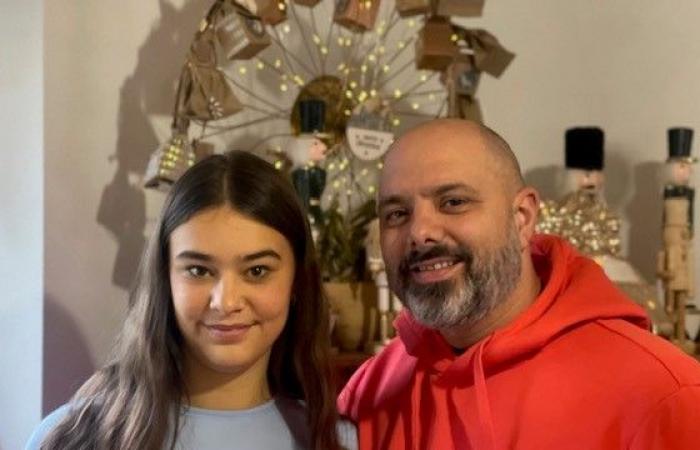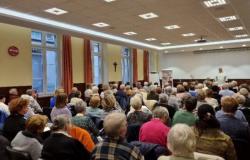
The Telethon allows major advances. Thanks to donations collected each year, medicines are developed by Généthon researchers and successfully tested on children suffering from rare genetic diseases. The 38th edition, which begins Friday, November 29 and ends 30 hours later on Saturday, hopes to match or even surpass the last one. In 2023, the Telethon collected nearly 93 million euros in donations, the best result since 2015.
13-year-old Elena's life has been transformed thanks to these new treatments. At birth, she was diagnosed with Crigler-Najjar disease, a rare genetic disorder that affects the liver and can spread to the brain. To combat its effects, she had to sleep every night under dazzling lamps. At her home, in Cocheren in Moselle, she shows a photo of this very special bed: “It's a bed in the shape of a cabin and it has my blue light. And I, every night, I had to sleep with this light for 10 to 12 hours, and I had to be completely naked. Every night, I got up and went to see my parents because I was hot or I couldn't sleep well under these lamps. It was very hard.”

Today, those nights spent under 30 degree lamps are nothing more than a bad memory. Because, thanks to her new treatment, Elena no longer needs her UV bed. She had the chance to participate in a clinical trial of Généthon, reserved for only five patients, which very quickly gave good results. “Right away, we saw that she had turned yellow, remembers his father Nicolas. And gradually, she was able to stop these phototherapy lamps. It was unexpected and completely crazy. Today, she is no longer constrained by her phototherapy sessions every night, she lives much more freely, with more spontaneity. She is much more independent and, for us parents, that is very reassuring because today, Elena, she is at greater risk of brain damage.”
“Before, I couldn’t do that”
Elena, who benefited from gene therapyat franceinfo
As soon as they could, they got rid of this huge lamp bed that was taking up all the space in Elena's room. One day, when she returned from summer camp, she had the pleasant surprise of finding a normal bed instead. Since then, she has been able to have a normal teenage life. “I couldn't go to sleep at people's houses without having my transport bed for my lamps. And so, since last year I've been able to sleep at friends' houses peacefully”, explains the young girl.
This first phase of the clinical trial made it possible to find the right dose of gene therapy to inject into Crigler-Najjar patients. The results were published in a scientific journal and today the trial continues with a larger number of patients across Europe.
It was Duchenne muscular dystrophy, which gradually destroys muscles, which was eating away at Sacha, aged 8. When he was diagnosed, he was barely 2 years old and his mother, Hélène, already saw him dead: “I saw my son lose his ability to walk, I saw him with a tracheotomy and I saw him die very quickly.” Patients with Duchenne muscular dystrophy die when they are between 20 and 40 years old.
Sacha was very lucky, he received the gene therapy treatment developed by researchers at Généthon. A single injection is enough; five young patients, aged 6 to 10, tested it and it worked very well on Sacha. His mother saw dramatic changes. “A month and a half after the injection, Sacha went up the stairs for the first time and that couldn't have been a coincidence. Clearly, we understood that the gene therapy was having its effect, that it not only stopped the illness, but it allowed Sacha to do things he had never done before. And today, we can go for walks. hike and, when we looked at the end of during the day, we had covered six kilometers!“
“Before injection, we went 100 meters and came back carrying him in our arms because he was crying from exhaustion.”
Hélène, Sacha’s motherat franceinfo
The trial will continue by including 64 small patients around the world. If these results are confirmed, it will be the culmination of several decades of research to find a way to cure Duchenne muscular dystrophy.
Like every year, a telephone number is open for donations. This is 36 37, to which calls are not surcharged. It is also possible to make a donation online.





